A question I’ve been hearing from students and acquaintances since winter is whether or not Nelle Harper Lee’s Go Set a Watchman ought to ever see the light of day. One source of the question seems to be an apprehension that the new book, which was Lee’s first attempt to write about the Finch family (sounds ornithological), would somehow tarnish the widely revered To Kill a Mockingbird. Although I haven’t yet seen the new (but older) book, I know a few things about it and read the first chapter in the Wall Street Journal last week. Adult Jean Louise’s narration is not so spellbinding as Scout’s, the background information is often mechanically wedged in, the impending drama forced, skids abound, though some gift is in evidence. Wise Blood’s train opening is better, though. Stylistically, Mockingbird displays an overall grace that Watchman might well lack, if the opening is representative. I don’t want to conclude too much from the sample, but it hasn’t altered my opinion about publication.
Though the recently discovered narrative is likely to be disappointing, of course it should be available for those who want it, since the author and publisher are willing to show it. Students of the process of fiction are certainly curious, and I’m assuming that the earlier fears that Lee was being manipulated by lawyers and false friends were mostly hogwash. Lots of other lawyers and companions have weighed in, the Sybil herself is sometimes lucid and has spoken. Harper Collins does not act injudiciously, which is not to say “without greed,” which is indigenous to the publication business, because it is a business. The critics will raise the banner of caveat lector (I recommend Natasha Trethewey’s prudent and carefully considered review in the Washington Post), and devotees of Mockingbird should be guided by their own needs and fears, calculate their own sensitivities, read it now or later or never, then revisit the book they love, whether for its virtues or its forays into the sentimental and the “back in the day” atmospherics. Alabama’s motto is “We dare defend our rights.” The home guard is already mustered and armed. Let the games begin.
Reviewers are likely to discuss the altered natures of the characters (a now-flawed and more realistic Atticus [“from Attica, or Athens”], especially), the point of view, the novels’ different tactics for configuring the question of civil rights, pace, humor, childhood, human compassion, guardian angels, mob mentalities and the rights of man (and woman and child). What I want to recommend, aspirant owner of a copy that I am, is that we take the occasion of this book’s full public birth to consider what and how we think about the first one and what this volume has to show us about the mysterious way books get written.
First cobweb to clear away: Go Set a Watchman is not a sequel or a prequel, no progression from the finding of the One Ring to its casting into the flames. It’s action occurs long after the events of Mockingbird have transpired, but the appearance of passages identical to those in Mockingbird, accompanied by complete reboots of some events in the earlier publication, make it clear that the pair of books is not a sequence, not a relay, but rather two separate heats, two very different encounters with some basic material concerning where and when and who and why. Watchman was written first, and an amazingly perceptive editor named Tay Hohoff said something akin to, “Not yet, ma’am, but keep trying,” but also made a major suggestion, to focus more on Scout, her mind and her involvement with the central public narrative in Maycomb. So Lee set aside the typescript and went back into the same woods by a different path and different phase of the moon, seeing things from an altered perspective, one that charmed out of her a song that was far more spellbinding than the one she’d found for Watchman. Maybe the books are like fraternal twins, one just developed smarter and more beautiful than the other, but a reader can’t start cross-referencing and try to mesh them into one plot. From my seat of high ignorance about most of the text, that looks like a fool’s errand. The people have not simply gotten older, they started older, and by the way, they’re not people at all.
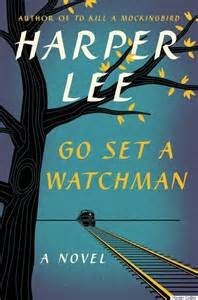
Though based, sometimes loosely, sometimes precisely, on real people, who have been pulled apart and reconfigured by fictive imperatives and the prism of the imagination, Dill, Boo, Jem, Jean Louise and Atticus are constructs, fictional manifestations of a dream dreamed while waking and while working like a mule and a thoroughbred at once. This fact eludes many of the spellbound, who want to see the characters as subjects of a jigsaw biography of Monroeville. The Finches follow the rules of plot and character, rather than the rules of life and personality, and though those two fields are similar (else all fiction would be mere distraction and entertainment), they are not identical. I’d wager there’s a demographic who constitute almost a cult of devotees, not quite Trekkies (or Mockies), but people whose feelings about Atticus and his cadre are not primarily about an aesthetic appreciation of fine writing, the old verities, the whole question of how the narrative theater offers story as vicarious experience. They’ve left the “vicarious” behind and so admire Atticus that they might feel a hankering to sue or duel someone for defaming Galahad’s character. Maybe even sue his creator for meddling after the book became a public treasure.
I might have been one of those Mockies when I was young, but I was confused by something I suspect jangled quite a lot of Mockingbird fans from the start. I cannot now say whether I read the book before I saw the movie. The former is more about the coming of age story, human development and dignity; the latter is more about the trial and the civil rights conflict, the application of the concept of dignity to the explosive (then, now, let’s pray not forever or even much longer) question of race. And the movie has Gregory Peck, not to shortchange the exquisite performance of ten-year-old Mary Badham (who could not pass for the six-year-old prodigy of the novel, but who’s counting?). If I got the word imagery first, it was quickly complicated by the cinematic version, and I was more taken with picture shows back then than with books about serious moral dilemmas and atrocities. Even when I read the novel again about five years ago, the knot was too tight for me to untangle it – Gregory Finch. The novel and the film and what we know about Peck’s life and career have all created a strange piece of psychological architecture in a fashion that might resemble the Huckleberry Finn complex, except that the text in that example is so revolutionary and (even with is problematic ending) bold and brilliant that even Twain’s remarkable life doesn’t amplify or impede the text. Lee’s novel may be unique in the way it engages us, and the fact that she never wrote another book after Mockingbird feeds the speculative, myth-making crowd. We do love our intrigues.
While I don’t believe that Go Set a Watchman will very much alter the peculiar way American readers (we few, we happy few?) cherish (or chastise – see the opinions of writers like Francine Prose) To Kill a Mockingbird, I do believe that the conversations – about fiction, childhood, even race – will be refreshed in many healthy and useful ways, which is not to say that foolish things may be said, not even to guarantee that I haven’t just said some of them, but it’s too late, isn’t it, to post my own caveat lector sign? And yet: BEWARE OF BLOG.
n.b. This morning I had a thought and prospected till I found my old Signet paperback of Mockingbird. Scout narrates the story of those early years from a distance: “When enough years had gone by to enable us to look back on them, we sometimes discussed the events leading to his accident.” Readers of the novel know it was no accident that left Jem’s arm damaged, but Ewell’s vicious attack on the children, but besides the camouflaging rewrite of personal history, what Jean Louise reveals here, as the style of her narration does throughout Mockingbird, is that J. L. F. is seeing these famous childhood events from an adult perspective, with the rhetorical powers of an adult. She could be the same Jean Louise going home on the train at the beginning of Watchman. The same, but more savvy and wise, as Lee probably was when she wrote the very good book, after she wrote the one that didn’t cut the mustard but which everyone’s wolfing down right now.
And the movie scene on the cover of my copy means the movie was out before I owned a copy. But had I seen it yet? I can’t afford the squad of shrinks needed to ferret that answer out.

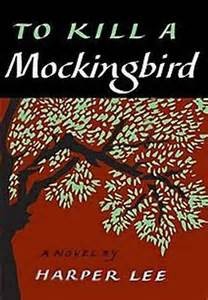

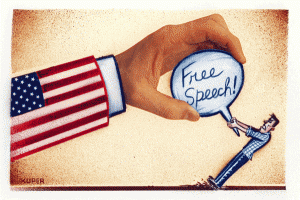 By the first line of a poem or a novel, I begin to dig deeper to try to understand its historical context, picturing the author as a historical actor or actress, inevitably influenced by his or her particular time and place. During my history seminar last semester, my extended research project focused on The New York Times v. Sullivan and the cases impact on the legal history of the Civil Rights Movement. Last week marked the 51st anniversary of the case and I have found myself, once again, combining my interests of literature and history, assessing how the case and its legacy of free speech relates to the publication of literature. While the majority of Americans view literature as a form of entertainment or art, literature has always been an effective and crucial actor in history. The New York Times v. Sullivan reveals the importance of the free press and journalism’s ability to bring about change, yet literature is just as much of a catalyst.
By the first line of a poem or a novel, I begin to dig deeper to try to understand its historical context, picturing the author as a historical actor or actress, inevitably influenced by his or her particular time and place. During my history seminar last semester, my extended research project focused on The New York Times v. Sullivan and the cases impact on the legal history of the Civil Rights Movement. Last week marked the 51st anniversary of the case and I have found myself, once again, combining my interests of literature and history, assessing how the case and its legacy of free speech relates to the publication of literature. While the majority of Americans view literature as a form of entertainment or art, literature has always been an effective and crucial actor in history. The New York Times v. Sullivan reveals the importance of the free press and journalism’s ability to bring about change, yet literature is just as much of a catalyst.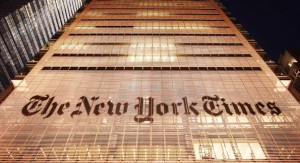 Fortunately, The New York Times appealed to the Supreme Court, which reversed the decision of the Alabama Court. The Court took the necessary measures to protect the rights of publications, understanding the importance of free speech in raising awareness and ensuring democracy, especially during at a time like the Civil Rights Movement.
Fortunately, The New York Times appealed to the Supreme Court, which reversed the decision of the Alabama Court. The Court took the necessary measures to protect the rights of publications, understanding the importance of free speech in raising awareness and ensuring democracy, especially during at a time like the Civil Rights Movement.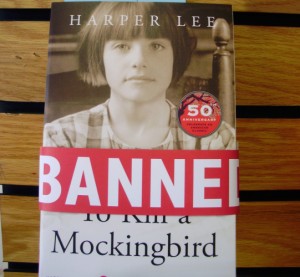 While we focus on the freedom of the press, freedom of all types of writing are critical to democracy. To Kill a Mockingbird, which is now a required read in most southern classrooms, was widely forbidden across the South. At the time, it was clear that the moving and authentic words of the story would inevitably cause even proponents of “separate but equal” to question their beliefs. After reading the novel, individuals across the nation altered their views, including James Carville who exclaimed, “It is because seeing things in writing brings change.” He continued that once he picked up the book, he immediately knew Harper Lee was right and he was wrong.
While we focus on the freedom of the press, freedom of all types of writing are critical to democracy. To Kill a Mockingbird, which is now a required read in most southern classrooms, was widely forbidden across the South. At the time, it was clear that the moving and authentic words of the story would inevitably cause even proponents of “separate but equal” to question their beliefs. After reading the novel, individuals across the nation altered their views, including James Carville who exclaimed, “It is because seeing things in writing brings change.” He continued that once he picked up the book, he immediately knew Harper Lee was right and he was wrong.